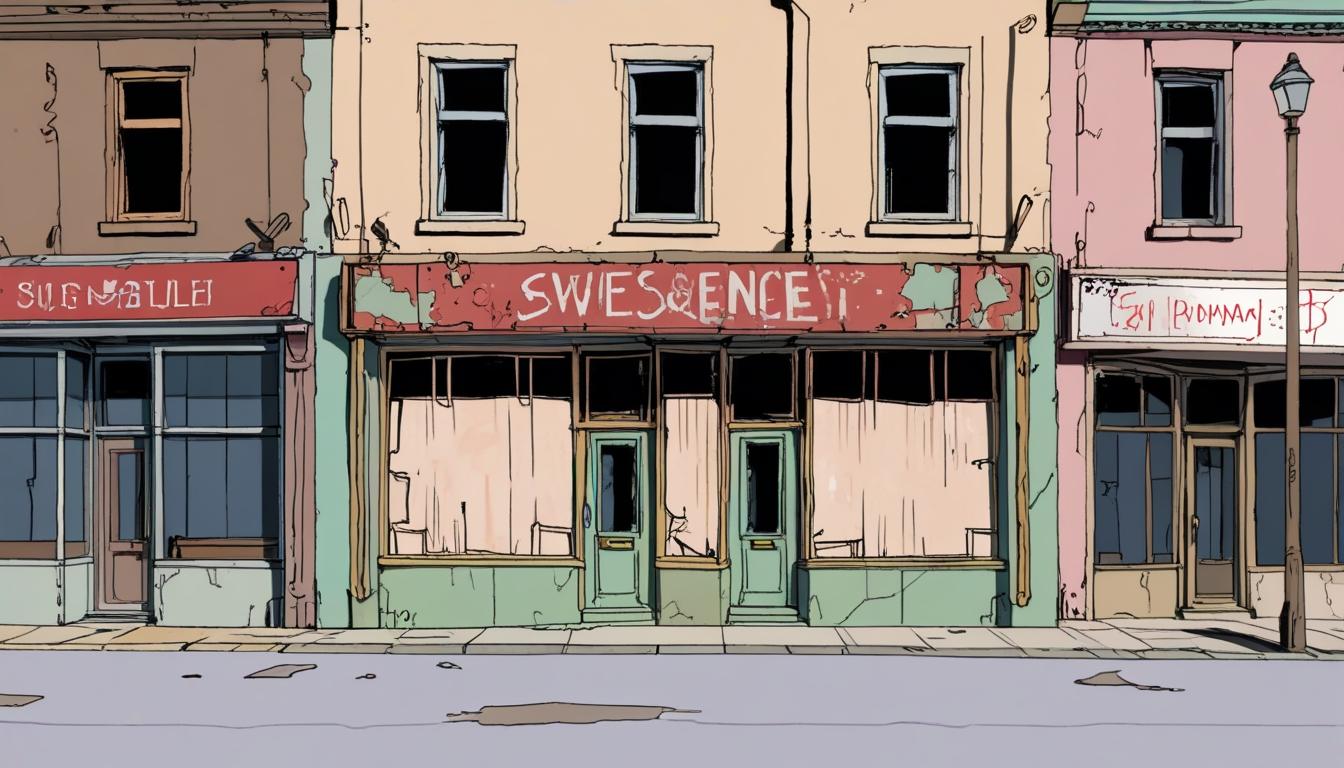A once-vibrant community in the heart of the Welsh valleys has become emblematic of the struggles facing many post-industrial areas in the UK. Rhymney, once renowned for its industrious spirit, now holds the dubious distinction of having the highest rate of individuals claiming sickness benefits due to anxiety in the country. The stark statistics reveal that one in thirty residents in this municipality, part of Blaenau Gwent, is receiving such benefits, with a total of 2,289 claimants.
As visitors stroll down the tree-lined high street, the profound cultural and economic decay is palpable. Residents describe the town’s atmosphere as drab and dispiriting, where the lingering effects of past industrial glory have given way to a pervasive sense of hopelessness. The traumatic impact of the Miners' Strike four decades ago remains a central point of blame, with locals often associating former Prime Minister Margaret Thatcher with the loss of stable employment opportunities when coal mining and manufacturing industries collapsed.
Richard Pugh, a former Labour councillor and current MacMillan Cancer Support worker in the town, discusses the "generational" cycle of unemployment. Many young people in Rhymney have grown up in families without regular employment, leading to a continuation of this cycle. Pugh states, "The closure of the pits was 40 years ago but we have never recovered; all health issues, including mental health and depression, stem from that."
There are perceived sociological dynamics contributing to the current crisis, where some residents express skepticism about the legitimacy of anxiety claims. For many, anxiety is difficult to prove, leading to beliefs that some individuals manipulate the system for financial gain. Alan Davies, a retired transport engineer, noted, "It's not like you have a spinal problem or mobility issues – anyone can say they've got anxiety."
This sentiment resonates with charitable organisations as well. Paul Thomas, manager of a local charity shop, argues that the stagnation stems from an ingrained reliance on benefits. "You are not going to go out to work for a basic wage when you can get just as much money for not working," he commented, lamenting the disappearance of the town's industrial backbone, including the local brewery and machinery factories that once provided employment for thousands.
Adding to the town’s malaise are the broader economic statistics that indicate a worrying trend. According to recent data, the employment rate for Blaenau Gwent stood at 69.4% in late 2023, lower than the Welsh average of 74.1%. The unemployment rate of 4.1% and a claimant count of 4.3% further underscore the economic challenges that residents face daily. Historical context is crucial here; since the closure of core industries in the late 20th century, attempts to attract new investment have been fraught with difficulty. In fact, residents often note the town feels like a “dumping ground” for social issues and anti-social behaviour as community spirit dwindles.
While some may believe a lack of amenities contributes to residents’ struggles, others argue that early intervention and community engagement could create a path towards improvement. A recent government initiative aims to tackle the high levels of economic inactivity by providing £240 million for personalised job support and improved NHS services. However, the overall effectiveness of these plans remains to be seen, especially in a community that has faced economic stagnation for decades.
Fading shopfronts and boarded-up buildings mark Rhymney’s high street, while locals express mixed feelings about their identity within this changing landscape. One shop owner reflected grimly on the town’s new title as the anxiety capital of the UK, stating, “Figures like this don't help us, they damage Rhymney's reputation.”
Even with longstanding issues, there is a flicker of resilience among some residents. As the distressing economic conditions persist, pockets of community initiative, however small, aim to revitalize the area. Yet, with ongoing barriers to employment and mental health care, Rhymney’s road to recovery seems long and arduous, suggesting that for now, the town may continue down a path of steady decline.
The juxtaposition of Rhymney’s scenic surroundings near the Brecon Beacons with the economic struggles faced by its residents calls for a greater awareness of the complex realities of post-industrial towns in Wales. Without tailored and effective strategies, there is a risk that disillusionment may only deepen, threatening to further entrench the patterns of generational unemployment and mental health crises seen today.
Reference Map
- Paragraph 1, 4, 6, 8, 9
- Paragraph 7
- Paragraph 5
- Paragraph 6
- Paragraph 6
- Paragraph 6
- Paragraph 8
Source: Noah Wire Services
